Understanding Electrical Transducers: A Guide for UAE & GCC Professionals
In the world of industrial automation and energy management across the UAE and GCC, precision isn't just a goal; it's a fundamental requirement. An electrical transducer is a vital device that acts as a translator, taking raw electrical measurements like high voltage or current and converting them into a standardized, low-level signal that control systems can safely understand.
What is an Electrical Transducer and Why is it Essential?
An electrical transducer solves a critical communication problem within an electrical system. It takes a powerful, potentially dangerous electrical signal and refines it into a universally understood language, like a 4-20mA signal or a 0-10V output. This translation is the bedrock of modern infrastructure in demanding environments from Dubai to Riyadh.
The brains of these operations are PLCs (Programmable Logic Controllers) and SCADA (Supervisory Control and Data Acquisition) systems. However, these systems can't directly handle the high voltages or currents from the grid or heavy machinery. A transducer bridges this critical gap, ensuring data from your electrical components UAE flows seamlessly and safely to your control system.
Why This Translation is Non-Negotiable
A transducer's job is about more than just communication. It delivers several foundational benefits crucial for any reliable and safe system, especially in the GCC's challenging climate.
- Signal Isolation: It creates a protective electrical barrier, isolating your expensive control gear from potentially damaging high power, surges, or faults—a non-negotiable safety feature in any control panel.
- Standardization: By converting various inputs into a common format (like a 4-20mA signal), transducers ensure components from different manufacturers can work together. This is key for building flexible, scalable systems.
- Accuracy Over Distance: Standardized signals, especially current loops, are highly resistant to electrical noise and voltage drop over long cable runs. This ensures the data reaching the control room is accurate, a common challenge in large facilities.
This capability is becoming even more critical as the region dives headfirst into smart technologies. The rise of Industry 4.0 and ambitious smart city projects in places like the UAE and Saudi Arabia is fueling massive growth in the sensor and transducer market. This is a key part of any modern energy management solution Dubai relies on.
At its core, the electrical transducer is the unsung hero that allows for coherent, safe, and efficient communication between the muscle and the brain of any modern electrical system.
Exploring the Main Transducer Types
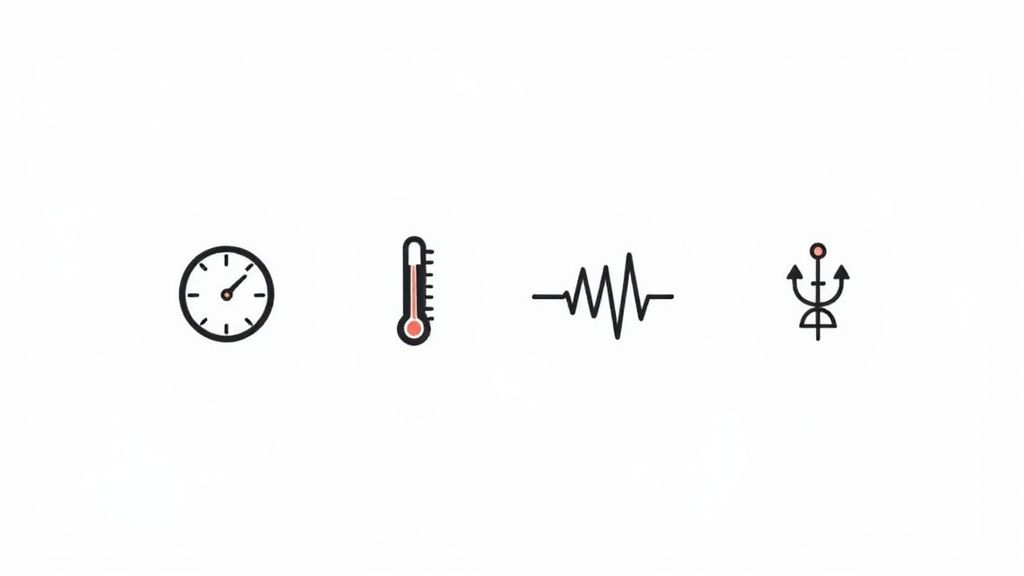
Not all transducers are created equal; each type is engineered for a specific job. To build a reliable system, you must understand the different transducer types and their unique roles. Let's break down the workhorses you'll most often find in control panels across the UAE and the wider GCC region.
Voltage Transducers
A voltage transducer is a foundational component for any system that needs to monitor supply voltage levels. It takes a high AC or DC voltage input and scales it down to a safe, standardized analog output, like a 0-10V or a 4-20mA signal. Your PLCs and other control gear simply can't handle direct exposure to 230V or 415V. A voltage transducer provides the necessary isolation and conversion, allowing the control system to safely monitor grid stability and detect under- or over-voltage conditions.
- Local Example: In a Dubai high-rise, a voltage transducer monitors the mains supply for the HVAC system. If it detects a major voltage drop, it signals the Building Management System (BMS) to safely power down sensitive equipment, preventing damage.
Current Transducers
A current transducer measures the AC or DC current flowing through a wire and converts it into a proportional, low-level signal. For measuring high currents, they often work with Current Transformers (CTs). This output gives you a real-time window into how much power a specific load is using—priceless for load monitoring and fault detection. An unusually high current draw could be an early warning that a motor is about to seize.
- Local Example: On a manufacturing line in a Jebel Ali factory, a current transducer tracks the current of a conveyor belt motor. The PLC can instantly detect a jam when the current spikes, shutting down the line to prevent costly damage.
Power Transducers
A power transducer delivers a complete picture of your energy consumption, making it essential for any serious energy management solution Dubai or Abu Dhabi requires. These devices perform advanced signal conditioning, measuring and calculating:
- Active Power (kW): The "real work" power that you see on your utility bill.
- Reactive Power (kVAR): The "wasted" power that inductive loads need to function. Too much can lead to utility penalties.
- Apparent Power (kVA): The total power your system must be built to handle.
By monitoring all three, a power transducer gives facility managers the crucial data they need to improve power factor, slash energy waste, and reduce electricity bills.
Frequency Transducers
In any AC power system, a stable frequency is a sign of a healthy grid. In the GCC, the standard grid frequency is 50 Hz. A frequency transducer accurately measures this frequency. Any deviation is a red flag, pointing to a problem with the grid or a backup generator. For critical facilities like data centers or airports, maintaining a stable frequency is non-negotiable.
- Local Example: A hospital's backup generator system relies on a frequency transducer to confirm its output is precisely at 50 Hz before the automatic transfer switch (ATS) connects it to critical loads, preventing damage to sensitive medical equipment.
When combined with modern communication protocols like RS485 Modbus, these transducer types paint a powerful and detailed picture of an entire electrical system's performance. You can explore a wide variety of these essential electrical components UAE on the GoSwitchgear transducers page.
Decoding Transducer Output Signals: 4-20mA, 0-10V, and Modbus
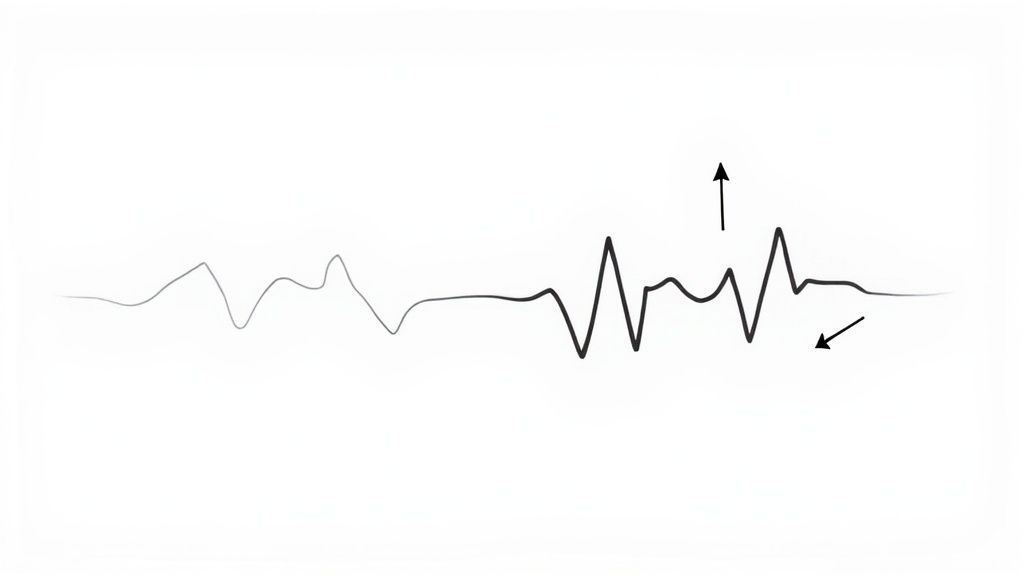
A transducer measures a physical parameter, but how does it communicate that information to the control system? This is where output signals come in. They are the common language that allows measurement devices to talk to PLCs or building management systems. Understanding these signals is critical for designing an accurate and robust monitoring network.
The Industrial Standard: The 4-20mA Analog Output
In industrial settings across the GCC, the 4-20mA signal is king. It's a current loop where the transducer adjusts the current flow between 4 milliamperes (mA) and 20 mA to represent the full measurement scale (e.g., 4mA = 0V, 20mA = 500V).
Engineers and electricians prefer this method for three key reasons:
- Noise Immunity: In a noisy factory floor or crowded electrical panel, electromagnetic interference (EMI) is a major issue. Current signals are far more resistant to this noise than voltage signals.
- Long-Distance Reliability: Voltage signals weaken over long cable runs, causing inaccurate readings. A current signal maintains its integrity, ensuring the reading at the PLC hundreds of meters away is the same one the transducer sent.
- Live Zero for Fault Detection: The signal's "live zero" is 4mA. If the signal ever drops to 0mA, you know immediately that there is a fault, such as a cut wire or a failed transducer. A 0-10V signal cannot distinguish between a real 0V reading and a system failure.
For its ruggedness, reliability, and built-in safety checks, the 4-20mA signal is the go-to analog output when data integrity is paramount.
The Digital Evolution: RS485 Modbus
The modern, data-hungry alternative to analog signals is RS485 Modbus. This is a digital communication protocol that allows multiple devices to communicate over a single twisted-pair cable in a "multi-drop" setup.
Instead of sending a single current level, a power transducer with RS485 Modbus can send a rich stream of digital data packets. This means one transducer can report on dozens of detailed metrics—voltage, current, active power, frequency, power factor—all through a single two-wire connection. This approach dramatically simplifies wiring, reduces installation costs, and provides a far richer overview of your system's performance, making it ideal for today's smart panels and advanced energy management solution Dubai projects.
How to Select a Transducer for Your Application
Choosing the right transducer is a critical decision that impacts the safety, accuracy, and efficiency of your entire control system. Get it right, and you have a reliable, data-rich system. Get it wrong, and you face maintenance headaches and inaccurate readings. Here’s a practical guide on how to select a transducer that meets the demanding conditions of the GCC region.
1. Define Your Input and Output Requirements
First, you must match the transducer to your system's electrical parameters and control needs.
- Input Range: What is the maximum voltage or current you need to measure? Always choose a transducer with an input range that comfortably exceeds your system's maximum operating value. For a 415V AC line, a transducer with a 0-500V AC input provides a safe working margin.
- Output Requirement: What signal does your PLC or BMS require? The transducer's output must match the controller's input. The 4-20mA signal is the industry standard for robust, long-distance communication. For systems requiring multiple parameters from one device, a transducer with RS485 Modbus communication is the most efficient choice.
2. Consider Environmental and Mounting Demands
The climate in the UAE and wider GCC is harsh. Extreme heat, dust, and humidity can cause improperly specified components to fail.
- Operating Temperature & IP Rating: A transducer in an outdoor enclosure in Dubai must be rated for ambient temperatures that can exceed 50°C. For dusty sites or outdoor panels, a high IP rating like IP65 is essential for long-term reliability against dust and humidity.
- Mounting Type: How will it be installed? For panel builders, DIN-rail mounting is the standard. It allows for fast, secure installation inside electrical enclosures, saving time and complexity.
3. Prioritize Reliability and Advanced Features
Finally, look at the details that separate a basic component from a professional-grade solution.
- Brand Reliability: Names like Rishabh Instruments and Multispan are trusted in demanding industrial settings for their proven track record. Choosing an established manufacturer provides peace of mind and better technical support.
- Field Programmability: This is a game-changer. Some advanced transducers allow you to configure input or output ranges on-site using software or DIP switches. This flexibility means a single model can be adapted for multiple uses, reducing inventory needs.

Transducer Selection Checklist for GCC Applications
This table provides a quick reference for weighing key factors, with a focus on the environmental and operational challenges found in the UAE and surrounding Gulf countries.
| Parameter | Key Considerations for UAE/GCC | Example |
|---|---|---|
| Input Range | Ensure it covers the maximum expected values plus a safety margin (e.g., 20%). | For a 230A motor, select a 0-250A or 0-300A current transducer. |
| Output Requirement | 4-20mA for long distances; RS485 for multi-parameter monitoring. | A 4-20mA output for a sensor located 50 meters from the control panel. |
| Operating Temp. | Must exceed the highest possible ambient temperature (e.g., >50°C for outdoor panels). | Choose a transducer rated for -20°C to +70°C for an outdoor enclosure. |
| IP Rating | Minimum of IP54 for dusty indoor sites; IP65 or higher for outdoor/wash-down areas. | An IP65-rated transducer for a pump control panel exposed to dust and moisture. |
| Mounting | DIN-rail mounting is standard and preferred for ease of installation in electrical panels. | A DIN-rail mount transducer for quick snap-in installation in an MDB. |
| Certifications | Look for CE, UL, or IEC marks to ensure safety and quality standards are met. | Sourcing a CE-marked transducer for a system being installed in a commercial building. |
Why Source Transducers from GoSwitchgear in the UAE?
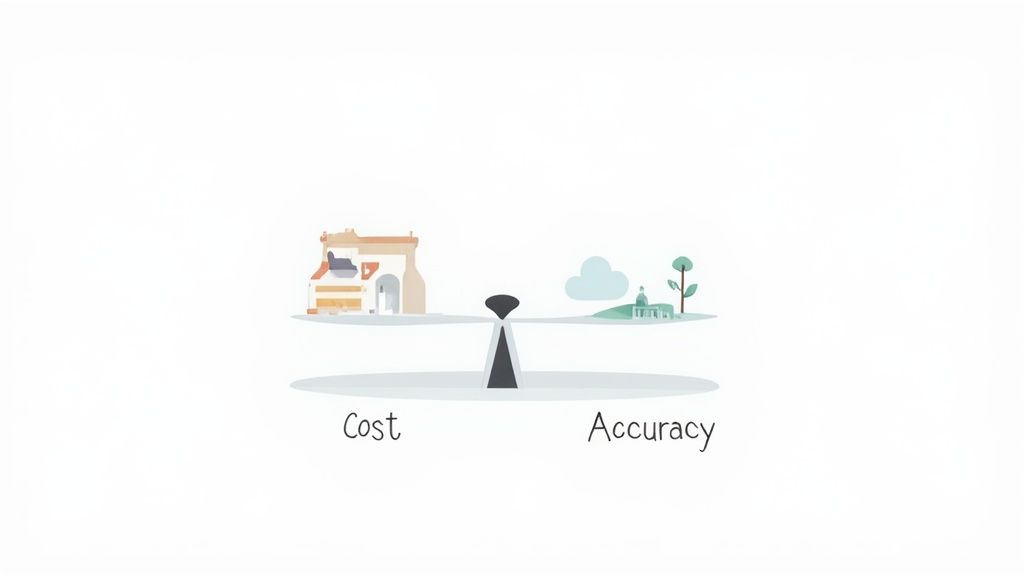
Sourcing reliable components without delaying your project timeline is a critical challenge. Choosing a supplier is a strategic decision that directly impacts project success. This is where having a local partner in the UAE who understands the urgency and landscape makes all the difference.
At GoSwitchgear, we solve the real-world headaches that engineers, panel builders, and procurement teams in the GCC face. We know that waiting weeks for a critical electrical transducer is not an option.
Wide Stock of Multispan and Rishabh Instruments
We maintain a large local inventory of transducer types from globally trusted manufacturers like Multispan and Rishabh Instruments. By stocking these reliable brands right here in the UAE, we ensure you get the electrical components UAE businesses depend on, precisely when you need them.
Forget the costly delays of international shipping. Our ready-to-ship inventory includes:
- DIN-rail mounting transducers for fast installation.
- Advanced models with RS485 Modbus for smart energy monitoring.
- A wide variety of analog output options, including the industry-standard 4-20mA signal.
- Single and dual output configurations to match your requirements.
You can find the perfect component without compromise. See our full, ready-to-ship inventory on the GoSwitchgear transducers page.
Expert Support and Technical Datasheets Available
We provide more than just parts; we offer local, practical expertise. Our technical support team in the UAE understands the unique challenges of building and maintaining systems in our climate. We will help you select the perfect transducer and provide all the datasheets and technical support you need for a smooth installation.
When you work with GoSwitchgear, you gain a reliable supply chain, a massive selection of proven products, and expert local support invested in your project's success. Reach our Dubai team for a quote or project support across the UAE and GCC.



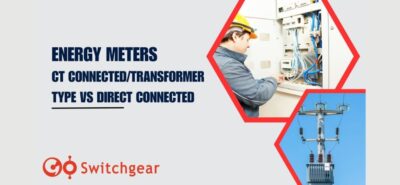
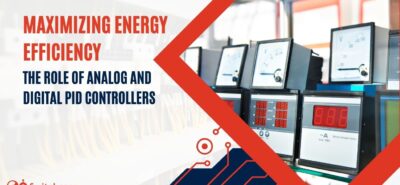
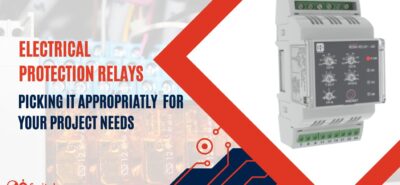




Leave a Reply